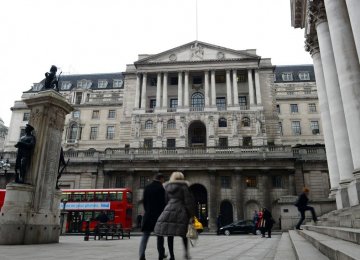Greece’s divisive negotiations with the EU have placed debt back at the center of debates about economic growth and stability. But Greece is not the only country struggling to repay its existing debt, much less dampen borrowing. Its fraught negotiations with its creditors should spur other countries to take action to address their own debt overhangs.
Since the global financial crisis erupted in 2008, the world’s debt has risen by $57 trillion, exceeding GDP growth. Government debt has increased by $25 trillion, with the advanced economies accounting for $19 trillion — a direct result of severe recession, fiscal-stimulus programs and bank bailouts, NewsNow reported.
While American households have reduced their debt considerably (mainly through mortgage defaults), household debt in many other countries has continued to grow rapidly. In all major economies, the debt-to-GDP ratio (including both public and private debt) is higher today than it was in 2007.
Much of this debt accumulation was driven by efforts to support economic growth in the face of deflationary headwinds after the 2008 crisis. That was especially so in China, which, together with other developing economies, accounts for nearly half of the debt incurred since 2008.
Debt Accumulation
To be sure, debt itself is not bad. But excessive reliance on debt creates the risk of financial crises, which undermine growth. Given this, the world needs to find both less credit-intensive routes to growth and ways to eliminate existing debt burdens.
To help limit future debt accumulation, countries have three options. First, they can employ countercyclical macroprudential measures to dampen credit cycles and prevent excessive borrowing.
Yet precisely the opposite approach is now being taken in the United States, where some first-time homebuyers have now been given access to 97 percent loan-to-value mortgages.
A second strategy for curbing the buildup of debt could be to introduce mortgage contracts that enable more risk sharing between borrowers and lenders, essentially acting as debt/equity hybrids. As the Great Recession grimly illustrated, when a period of soaring real-estate valuations and rising household debt is followed by a period of falling prices, and households attempt to deleverage, the results can be catastrophic.
A third option for limiting debt accumulation is to reconsider tax rules that favor debt. In many countries, interest accrued on a mortgage remains tax deductible. Though phasing out this policy is politically contentious, some countries — such as the United Kingdom in the 1980s — have managed to do so.
Fiscal Adjustments
Governments must also work to reduce existing debt — and the deficient global demand to which it contributes. It is simply not feasible for the most highly leveraged governments to grow their way out of debt. Nor can austerity alone suffice, as it would require countries to make such large fiscal adjustments — 5 percent of GDP, in Spain’s case — that citizens would likely resist them, as the Greeks have done.
Investors, analysts and other commentators, for their part, must take a more nuanced view of governments’ true debt liabilities. Much of the sovereign-debt accumulation of recent years has been enabled by quantitative easing, with central banks making large-scale purchases of government bonds. The US Federal Reserve, the Bank of England and the Bank of Japan now own 16 percent, 24 percent and 22 percent, respectively, of all bonds outstanding.
Given that central banks are owned by the government, and that interest paid on outstanding bonds is remitted back to the national treasury, these government bonds are fundamentally different from those owned by other creditors. Focusing on “net” government debt (which excludes intra-government debt holdings, such as the bonds owned by central banks) is a more effective approach to assessing and ensuring the sustainability of public debt.
It is time to redirect financial innovation toward developing new tools and approaches to address these challenges. Only then can the world economy move onto a sustainable growth path.





